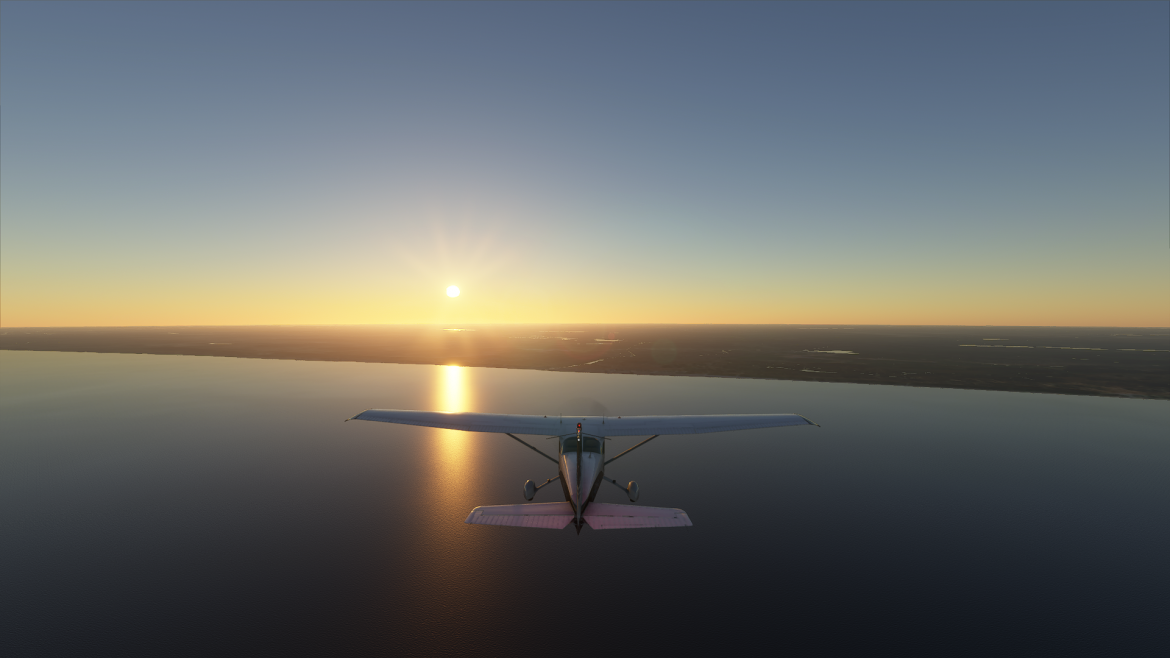The new edition of Microsoft Flight Simulator has become a visual masterpiece, which is only possible by making smart use of AI, machine learning and the corresponding computing power in the cloud. As a result, the entire world is shown in detailed 3D image, in combination with live weather effects and other air traffic.
The penultimate edition of Microsoft Flight Simulator dates back to 2006. Until then, from the introduction of the first version in 1982, regular updates were released, adding a new level of realism to virtual flying. In particular the flight models of a wide range of aircraft types were already extremely realistic in FSX.
Realism
And while the graphics got nicer with each release, they remained clear computer generated images. That has changed completely with the recently launched version, Microsoft Flight Simulator 2020. The entire world has been modeled in 3D based on satellite images from Bing Maps, which provides an unprecedented degree of realism from the virtual planes. Navigating by sight, for example, flying on the basis of VFR, can now be done by using actually existing and recognizable terrain features.
Impossible task
This new degree of realism is only possible through a combination of AI, machine learning and cloud computing, in this case the computing power in Microsoft Azure. Whereas until now the virtual world was always manually modeled for games, that is an impossible task when the entire world has to be displayed photo-realistic in 3D. In addition to the various nature reserves, this program concerns, for example, 1.5 billion houses, all of which are depicted in a style that suits the geography, approximately in the correct height.
Open worlds
After fourteen years of stagnation in the development of the Flight Simulator series, Microsoft did not have the technology to do this. That is why Microsoft called on the French company Asobo, which had no experience with developing flight simulators, but with creating large open worlds. This experience was supplemented by various partners, with the Austrian start-up Blackshark.ai making an important contribution.
Machine learning
The approximately fifty employees of this company had gained experience in creating large game worlds based on AI. After they accidentally came into contact with Microsoft, they were commissioned to design 1.5 billion houses in 400 cities in 3D. For this, the AI used was supplemented with machine learning.
Shadows
The basis for the FS world are the 2D images from Bing Maps. The computer looks on the maps at the buildings displayed, and then combines these with as much external data as possible, such as the architectural style at a particular location, height data, and the nature of the buildings (houses or shops). On the basis of machine learning, places were filled in that were invisible due to shadows, for example. Machine learning was also used to train the AI on height differences between, for example, shops and skyscrapers, which have a similar roof, but can differ significantly in height.
Cloud
Several dozen cities, plus a series of well-known airports, have been modeled by hand. But the rest of the world has been shaped by AI. Incidentally, the digital pilot does not get the entire world loaded on his computer. In order to play Microsoft Flight Simulator, an internet connection is required so that the areas where flying can be loaded from the Azure cloud.
Updates
The 3D world of Microsoft Flight Simulator is far from flawless, but it is largely accurate. The makers estimate that about twenty percent can still be improved. That will also happen, because updates will be made regularly in the coming years. The slogan of previous editions has always been as real as it gets, and this edition has brought an unprecedented degree of realism to the virtual world with the help of technology not available fourteen years ago.

